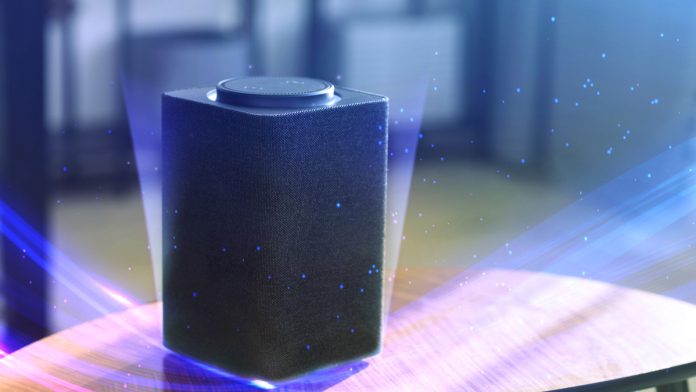In today’s cinematic landscape, cutting-edge techniques are reshaping theatre experiences by fusing art with technology. This article explores key innovations, from object-based audio and advanced codecs to AI-driven sound processing and custom acoustic modeling, that elevate on-screen storytelling. Each breakthrough contributes uniquely to transforming viewer engagement through Immersive 3D Audio.
| Table of Contents | |
|---|---|
| I. | Object-Based Audio and Metadata-Driven Sound Design |
| II. | Ambisonics and Higher-Order Ambisonics (HOA) |
| III. | Real-Time Adaptive Audio Rendering |
| IV. | Psychoacoustics and Spatial Sound Perception |
| V. | Advanced 3D Audio Codecs and Streaming Technologies |
| VI. | Machine Learning and AI in Sound Processing |
| VII. | Head-Related Transfer Function (HRTF) Personalization |
| VIII. | Acoustic Modeling and Digital Twins of Theatre Environments |
| IX. | Integration of Immersive Audio with AR/VR and Visual Technologies |
| X. | Innovative Spatial Audio Hardware for Theatres |
Object-Based Audio and Metadata-Driven Sound Design
Object-based audio leverages distinct sound elements that can be individually manipulated for precise spatial positioning, while metadata-driven design provides vital context for each audio cue. This synergy allows sound engineers to sculpt dynamic and realistic soundscapes. Integrating Immersive 3D Audio enhances the narrative impact by seamlessly matching acoustic cues with visual storytelling, ensuring every sound object enhances the cinematic experience.
Ambisonics and Higher-Order Ambisonics (HOA)
Ambisonics encodes complete sound fields, offering a spherical audio reproduction that surrounds the audience. Higher-Order Ambisonics (HOA) takes this further by improving spatial resolution and accuracy. This refined approach reproduces realistic spatial cues that fully engage listeners. By employing Immersive 3D Audio, theatres deliver soundscapes with unmatched precision, ensuring an enveloping and authentic auditory journey throughout the performance.
Real-Time Adaptive Audio Rendering
Modern theatres are adopting systems that render sound in real time, adapting to dynamic environments and audience interactions. Advanced algorithms optimize acoustic performance based on spatial positioning, ensuring that dialogue and effects synchronize flawlessly with on-screen action. Implementing Immersive 3D Audio techniques heightens the responsiveness of these systems, delivering a consistently engaging and finely tuned auditory experience during every cinematic presentation.
Psychoacoustics and Spatial Sound Perception
Understanding human auditory perception is key to designing effective theatre soundscapes. Psychoacoustics explores how listeners interpret and localize sounds, guiding designers to manipulate timbre and frequency for a realistic experience. This research underpins techniques that simulate three-dimensional environments. Employing Immersive 3D Audio methods, theatres can craft acoustically rich experiences that resonate emotionally, ensuring every seat captures the intended impact of the performance.
Advanced 3D Audio Codecs and Streaming Technologies
Modern codecs and streaming platforms now deliver high-fidelity audio, essential for today’s cinematic experiences. These technologies compress and transmit sound with minimal latency, ensuring superior quality and precision. By integrating Immersive 3D Audio techniques, theatres can present spatially accurate sound that enriches storytelling. Enhanced efficiency in audio delivery meets the growing expectations of audiences, sustaining a cutting-edge environment that adapts to evolving cinematic demands.
Machine Learning and AI in Sound Processing
Artificial intelligence and machine learning are revolutionizing how sound is processed in cinemas. These systems analyze intricate audio patterns to optimize spatial rendering and dynamic mixing while minimizing latency. Integrating Immersive 3D Audio capabilities, smart algorithms predict acoustics and tailor soundscapes in real time. This AI-driven approach refines audio quality and adapts to diverse theatre designs, ensuring that every viewer experiences a personalized and remarkably clear auditory narrative.
Head-Related Transfer Function (HRTF) Personalization
HRTF personalization transforms sound delivery by tailoring audio filters to individual ear shapes and positioning, thereby refining spatial perception. This technology adjusts frequencies and volume based on unique listener profiles, creating a bespoke acoustic environment. By harnessing Immersive 3D Audio, theatres offer each audience member a finely tuned and customized sound experience that heightens emotional engagement with on-screen action, making every listening encounter uniquely immersive.
Acoustic Modeling and Digital Twins of Theatre Environments
Digital twins and acoustic modeling create virtual replicas of theatre spaces, accurately simulating how sound interacts with physical environments. These models guide optimal speaker placement and material selection long before construction. Incorporating Immersive 3D Audio into these models enables designers to experiment and predict acoustic outcomes, ensuring that every corner of the theatre delivers pristine sound. This methodology enhances both performance design and audience immersion through precise sound replication.
Integration of Immersive Audio with AR/VR and Visual Technologies
Merging audio with AR/VR and other visual systems crafts unified multimedia experiences in theatres. This integration synchronizes sound with interactive visual cues, deepening narrative immersion. New platforms align digital soundscapes with virtual environments to produce layered storytelling that captivates audiences. Utilizing Immersive 3D Audio innovations, these systems bridge auditory and visual realms, creating a cohesive sensory environment that redefines the modern cinematic experience.
Innovative Spatial Audio Hardware for Theatres
Breakthrough hardware solutions are redefining theatre acoustics with precision-engineered speakers and subwoofers that tailor sound dispersion to specific architectural designs. These innovations ensure optimal clarity and dynamic range throughout the performance space. By leveraging Immersive 3D Audio breakthroughs, theatres can seamlessly integrate cutting-edge devices with traditional audio setups to create an evolving auditory landscape. This hardware synergy enriches both the technical quality and emotional impact of cinematic presentations.

